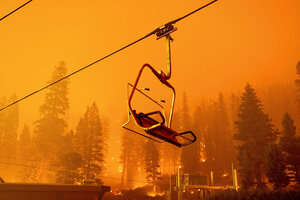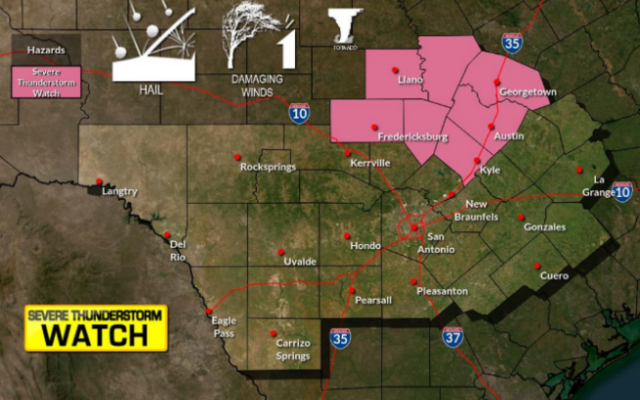Massive fire threatens Lake Tahoe, more ordered to flee

SOUTH LAKE TAHOE, Calif. (AP) — People were told to flee from a long section of the Lake Tahoe shoreline Monday as a huge forest fire threatened to push into the resort region straddling California and Nevada.
The new orders for people to immediately evacuate included part of the tourist city of South Lake Tahoe and about 15 miles up the western shore of the lake. It comes a day after communities several miles south of the lake had abruptly been ordered evacuated as the Caldor Fire raged nearby.
South Lake Tahoe’s main medical facility, Barton Memorial Hospital, proactively evacuated 36 patients needing skilled nursing and 16 in acute care beds Sunday, sending them to regional facilities far from the fire, public information officer Mindi Befu said. The rest of the hospital was evacuating following Monday’s expanded orders.
The region is facing a warning from the National Weather Service about critical fire weather Monday through Tuesday across the northern Sierra Nevada and southern Cascade Range.
The fire destroyed multiple homes Sunday along Highway 50, one of the main routes to the south end of the lake. The fire also roared through the Sierra-at-Tahoe ski resort, destroying some buildings but leaving the main buildings at the base intact.
“Today’s been a rough day, and there’s no bones about it,” Jeff Marsolais, forest supervisor for El Dorado National Forest, said Sunday. A few days ago, he had thought crews could halt the Caldor Fire’s eastern progress, but “it let loose.”
Flames churned through mountains just a few miles southwest of the Tahoe Basin, where thick smoke sent tourists packing at a time when summer vacations would usually be in full swing ahead of the Labor Day weekend.
“To put it in perspective, we’ve been seeing about a half-mile of movement on the fire’s perimeter each day for the last couple of weeks, and today, this has already moved at 2.5 miles on us, with no sign that it’s starting to slow down,” said Erich Schwab, division chief for the California Department of Forestry and Fire Protection.
The Caldor Fire has scorched nearly 277 square miles since breaking out Aug. 14. After the weekend’s fierce burning, containment dropped from 19% to 14%. More than 600 structures have been destroyed, and at least 20,000 more were threatened.
It’s among nearly 90 large blazes in the U.S. Many are in the West, burning trees and brush sucked dry by drought. Climate change has made the region warmer and drier in the past 30 years and will continue to make the weather more extreme and wildfires more destructive, according to scientists.
In California alone, more than a dozen large fires are being fought by more than 15,200 firefighters. Flames have destroyed about 2,000 buildings and forced thousands to evacuate this year while blanketing large swaths of the West in unhealthy smoke.
In Southern California, a section of Interstate 15 closed Sunday after winds pushed a new blaze, the Railroad Fire, across lanes in the Cajon Pass northeast of Los Angeles.
Farther south, evacuation orders and warnings were in place for remote communities after a wildfire ignited and spread quickly through the Cleveland National Forest on Saturday. A firefighter received minor injuries, and two structures were destroyed in the 2.3-square-mile Chaparral Fire burning along the border of San Diego and Riverside counties, according to Cal Fire. It was 13% contained Monday.
Meanwhile, California’s Dixie Fire, the second-largest in state history at 1,205 square miles, was nearly halfway contained about 65 miles north of the fire near Lake Tahoe. Nearly 700 homes were among almost 1,300 buildings that have been destroyed since the Dixie Fire began in early July.
Containment increased to 26% on the French Fire, which covered nearly 40 square miles in the southern Sierra Nevada. Crews protected forest homes on the west side of Lake Isabella, a popular recreation area northeast of Bakersfield.
The U.S. Department of Defense is sending 200 Army soldiers from Washington state to help firefighters in Northern California, the U.S. Army North said in a statement Saturday. Eight Air National Guard and Air Force Reserve C-130 aircraft capable of dropping thousands of gallons of fire retardant also have been sent to fight wildfires in the West.
___
This story has been corrected to show that residents on a portion of the California side of the lake have been warned to be prepared to leave, not ordered to leave.
You Might Also Like



